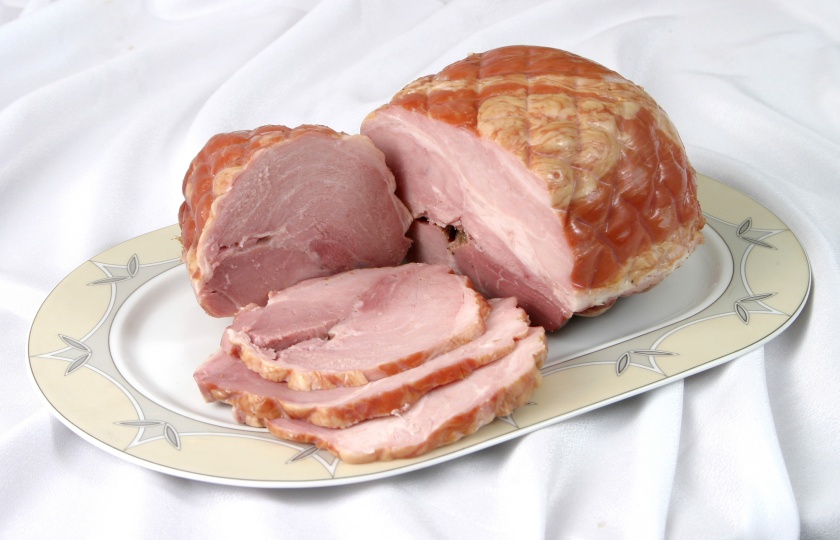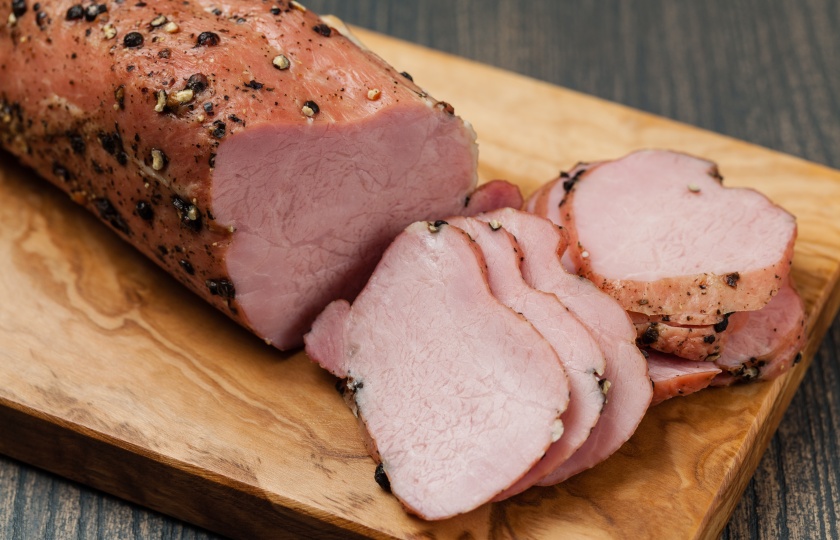Storage Tips: How Long Will Cooked Gammon Last In The Fridge

Cooked gammon's refrigerator life depends on multiple factors. This detailed guide helps you understand how to maximize storage duration.
How many days can cooked gammon keep in the fridge?
The cooked ham should preferably be consumed within 3 to 4 days after refrigeration. Keeping it for too long not only affects the taste but may also allow bacteria to grow. Here are some methods to help you extend its freshness:
Separate Packaging for Easier Storage
For newly purchased or freshly cooked ham, cut it into small pieces according to the amount you use each time. Wrap it tightly with plastic wrap or place it in a sealed container. Avoid repeated thawing and reduce the chance of exposure to air to prevent flavors from mixing.
Keep an Eye on the Refrigeration Temperature
It is recommended to keep the temperature of the refrigerator's refrigerating compartment between 0 - 4°C. When storing, place it as far back as possible in the middle layer of the refrigerator, away from the frequently opened refrigerator door. If you notice that the surface of the ham becomes slippery or sticky, or if there is an acidic smell, throw it away without hesitation.
Can you freeze cooked gammon?
Yes, you can freeze cooked gammon. I've tried freezing it for up to about 3 months. If it's frozen for any longer, the meat will tend to dry out. After thawing, it's more suitable for dicing and using in stews or soups. Eating it directly will make it a bit tough.
Drain the Moisture Before Separating and Packaging
After boiling the gammon, place it on a strainer until it reaches room temperature. Gently wipe off any sauce or oil on the surface with kitchen paper. Cut large pieces of the gammon into slices 3 - 5 centimeters thick. Wrap each slice tightly in aluminum foil and then place them in a freezer - specific sealed bag.
Avoid Freezer Crystals
When squeezing out the air from the sealed bag, I insert a straw and suck it out slowly. This is more thorough than just pressing it with your hands. Mark the date on the bag and lay it flat at the back of the freezer compartment, away from areas that are opened frequently.
Proper Thawing Methods
Put it in the refrigerator's refrigerating compartment the night before, or soak it in cold water for 2 hours while still in the bag. If you're in a hurry, you can thaw it in the microwave on low power in several intervals. However, the edges tend to dry out. It's best to start cooking it immediately after thawing.

Should I let the ham cool completely before refrigerating?
Yes, the ham must be cooled to a temperature where it's no longer too hot to touch before refrigerating. Putting hot food directly into the refrigerator right after taking it out of the oven or pot can cause temperature fluctuations in the surrounding food, which may affect the freshness preservation effect. However, waiting for it to cool completely takes too long and instead, it's more likely to allow bacteria to grow.
My habit is to prepare a large stainless - steel tray and spread out the sliced ham flat for heat dissipation. This way, the contact area with air is large, and the cooling speed is three times faster than when stacking the whole piece. After about 40 minutes, when it feels about the same temperature as the palm of your hand, it can be put into a box and refrigerated.
There are two details to note - first, place kitchen paper at the bottom of the sealed box to absorb moisture, and leave a gap about half a finger - width at the top. When refrigerating, remember to place the box on the metal shelf in the middle layer of the refrigerator where the cold air circulation is the best. When you eat it the next day, the meat juice won't seep out, and there won't be frost on the surface.
Does cooked gammon need to be sealed?
It must be stored in a sealed manner. Cooked gammon easily dries out or absorbs the odors in the refrigerator when exposed to air. After losing moisture, the texture will become tough. Let me share the specific methods:
Sealing is a Necessary Step
When refrigerating, wrap the gammon tightly with two layers of plastic wrap, pressing down on the edges. If placing it in a sealed container, first place a sheet of kitchen paper at the bottom to absorb moisture, and it's best to stick a layer of plastic wrap on the inside of the lid to enhance the tightness.
Emergency Substitute for Sealing
If you can't find a sealed container temporarily, you can wrap the gammon completely with aluminum foil and then put a thick plastic bag over it and tie the mouth tightly. Or soak the gammon in cold brine (salt concentration of 5%), but this method can only last for up to two days.
Remedial Measures for Air Leakage
If you find that the edges of the gammon have dried out after refrigeration, cut off the discolored parts. Chop the remaining part and mix it with salad dressing or melted butter to make sandwich fillings, which can mask the toughness. For gammon that is already obviously oozing water or sticky, it is recommended to heat it thoroughly before consumption.

How to tell if cooked gammon has gone bad?
First, smelling and then touching are the most direct methods.
A normal gammon has a light smoky and savory smell. If it emits an acidic, putrid smell or a pungent odor similar to ammonia, it must not be eaten any more. Gently press the surface with your finger. Fresh gammon feels moist but not sticky. If it feels greasy or stringy, it means bacteria have already grown.
Be vigilant about abnormal colors.
If the meat changes from pink to grayish - white or greenish, especially if there are patchy discolorations at the edges of the cut surface, it usually indicates spoilage. If white fluff or green spots appear on the surface of the gammon, even if it's just a small area, the whole piece must be discarded.
Treat borderline conditions with caution.
Sometimes, although it doesn't have an off - smell, if it has been refrigerated for more than five days or was not properly sealed during storage, I would cut off the suspicious parts and boil them in boiling water for 3 minutes. If the meat falls apart into pieces after boiling or the broth becomes cloudy and foamy, it proves that it has gone bad. To be on the safe side, it's better not to eat this kind of gammon.
What is the best way to reheat cooked gammon?
I highly recommend using either an oven or steaming it over water. Directly frying or roasting it at high temperatures can easily make the surface charred and hard while causing the inside to lose moisture.
The Oven Provides the Most Even Warming
After preheating the oven to 150°C, slice the gammon and place the slices on a baking tray. Brush a layer of honey water or broth on the surface. Cover with aluminum foil and bake for 15 minutes. Then remove the foil and bake for another 5 minutes until the edges are slightly charred. This method makes thick - cut gammon more tender.
The Steamer Saves the Day Without Making the Meat Tough
After bringing water to a boil, turn off the heat. Put the whole gammon on a plate and place it in the steamer. Cover the lid and let it sit in the residual heat for 8 minutes. If you are steaming sliced gammon, place two slices of Chinese cabbage or carrot at the bottom of the plate to prevent the gammon from getting too soggy due to direct contact with the steam.
It's Best Not to Use a Microwave to Reheat
If you really need to use a microwave, heat the gammon on medium power for 20 seconds, then take it out and turn it over. Repeat this 3 times. Sprinkle a little water on the surface of the gammon before each heating, or cover it with a piece of damp kitchen paper. Never heat it on high power all at once, or the edges will become as hard as rubber.























